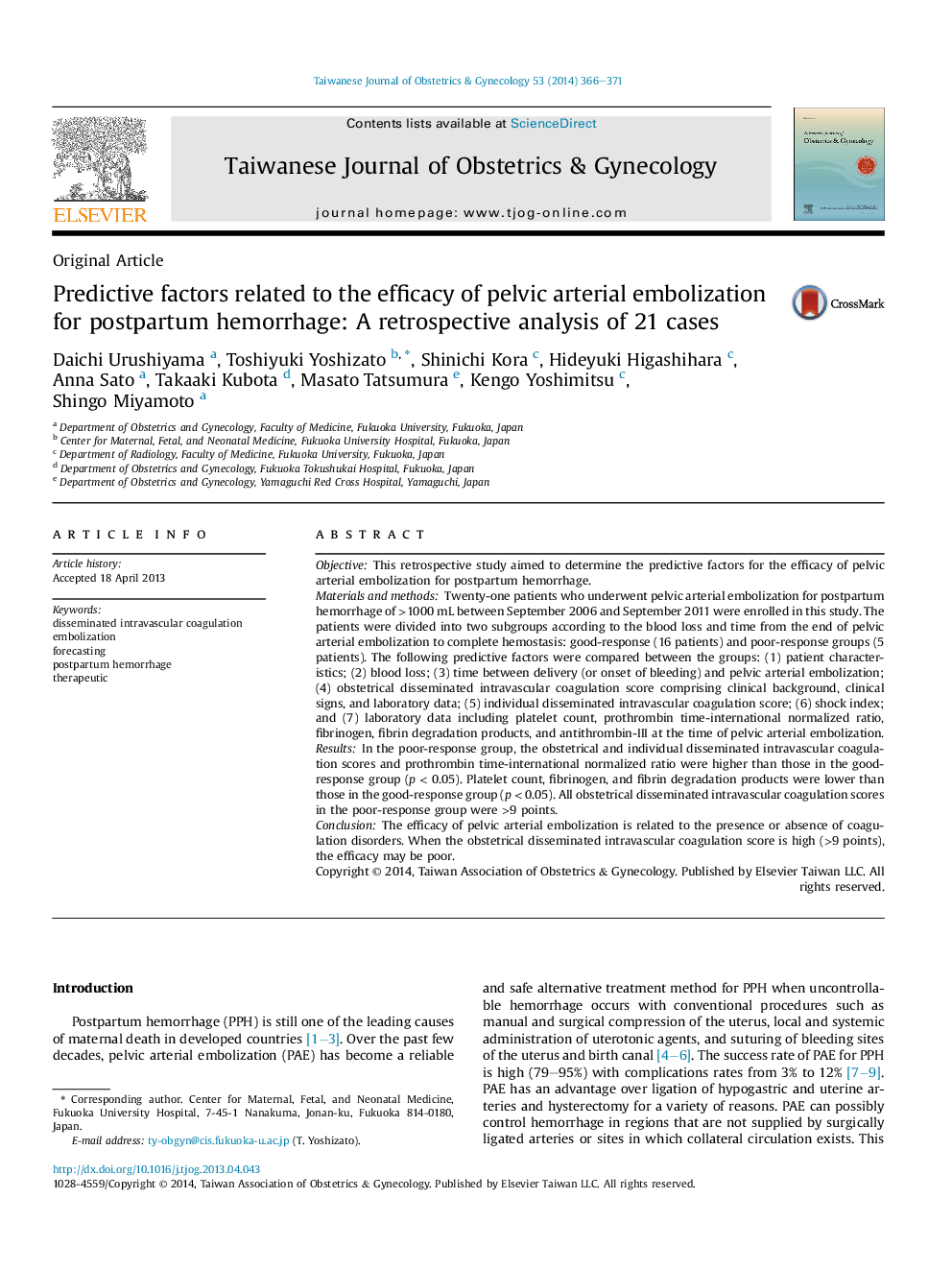| کد مقاله | کد نشریه | سال انتشار | مقاله انگلیسی | نسخه تمام متن |
|---|---|---|---|---|
| 3975207 | 1600976 | 2014 | 6 صفحه PDF | دانلود رایگان |
ObjectiveThis retrospective study aimed to determine the predictive factors for the efficacy of pelvic arterial embolization for postpartum hemorrhage.Materials and methodsTwenty-one patients who underwent pelvic arterial embolization for postpartum hemorrhage of >1000 mL between September 2006 and September 2011 were enrolled in this study. The patients were divided into two subgroups according to the blood loss and time from the end of pelvic arterial embolization to complete hemostasis: good-response (16 patients) and poor-response groups (5 patients). The following predictive factors were compared between the groups: (1) patient characteristics; (2) blood loss; (3) time between delivery (or onset of bleeding) and pelvic arterial embolization; (4) obstetrical disseminated intravascular coagulation score comprising clinical background, clinical signs, and laboratory data; (5) individual disseminated intravascular coagulation score; (6) shock index; and (7) laboratory data including platelet count, prothrombin time-international normalized ratio, fibrinogen, fibrin degradation products, and antithrombin-III at the time of pelvic arterial embolization.ResultsIn the poor-response group, the obstetrical and individual disseminated intravascular coagulation scores and prothrombin time-international normalized ratio were higher than those in the good-response group (p < 0.05). Platelet count, fibrinogen, and fibrin degradation products were lower than those in the good-response group (p < 0.05). All obstetrical disseminated intravascular coagulation scores in the poor-response group were >9 points.ConclusionThe efficacy of pelvic arterial embolization is related to the presence or absence of coagulation disorders. When the obstetrical disseminated intravascular coagulation score is high (>9 points), the efficacy may be poor.
Journal: Taiwanese Journal of Obstetrics and Gynecology - Volume 53, Issue 3, September 2014, Pages 366–371
